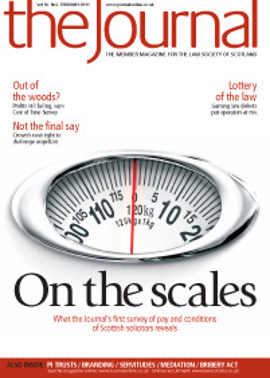Family friendly

The coalition Government has embarked on an ambitious ongoing employment law review. The stated aim of the review is to maximise flexibility for both employers and employees while protecting fairness and maintaining a competitive environment. What practical challenges face firms as employers, and their clients?
Two steps forward?
Two new elements of this flexible approach are introduced in April of this year.
First, the right to request flexible working will be extended to parents of children under 18 (currently the right to request flexible working is available to parents of children aged under 17, parents of disabled children under 18 and carers of certain adults).
Secondly, in respect of parents of a baby due on or after 3 April 2011, the right to additional paternity leave (APL) comes into force. The right is applicable to an employee who is the child’s biological father, or the spouse or partner (of either sex) of the child’s mother or adopter. The statutory minimum entitlement will be to one period of APL lasting between two and 26 weeks (in multiples of complete weeks). The period of APL must be taken within a "window" that starts 20 weeks after the child’s date of birth or placement for adoption and ends 12 months later.
Uncertain impact
In terms of the impact on business resources, the extension to the right to request flexible working should not be too challenging. The statistics tell us that 10.5 million employees are currently eligible under the right, with the number of additional employees that could benefit from the new legislation estimated at 288,000. Many employers already extend the right to request flexibility beyond parents of younger children.
The changes to paternity leave pose more of a potential challenge in terms of implementation and replacement cover. It is likely that most organisations will currently have a paternity leave policy covering ordinary paternity leave (OPL), that is one or two weeks within eight weeks of the birth of the child. The new provisions dramatically extend the entitlement.
In terms of eligibility for APL and additional statutory paternity pay (ASPP), the requirements largely mirror those for OPL, although, importantly, an additional eligibility requirement for APL is that the child's mother must have been entitled to maternity leave, statutory maternity pay or maternity allowance, and have returned to work with at least two weeks of their pay period remaining. The total number of weeks of ASPP that the employee will receive depends on the mother or partner’s unused weeks.
In terms of how much of an uptake there will be of APL, this will largely turn on family finances. Where the woman is the higher earner, it may be a welcome new option. Where the father is the higher earner, many families will simply not be able to afford to use the entitlement, even if they wanted to. Employers should nevertheless consider the possibility of male employees giving eight weeks’ notice of absence up to 26 weeks with a right of return – a new concept for many businesses.
Further issues
A practical issue for businesses to consider is whether enhancing maternity pay and benefits, but not the equivalent paternity provisions, could be viewed as discriminatory. It is envisaged that employers may face challenges if they meet only their statutory obligations in respect of paternity but enhance maternity benefits. Employees may find it difficult to prove that there is any disparate impact with a claim of this kind, given that paternity leave can be taken by members of either sex and a woman taking APL would also not be entitled to the enhanced paternity benefits. Treating employees on maternity leave and paternity leave equally would likely be the safest option for employers; no doubt in time guidance will be given.
We are told that Government plans to be unveiled later this year are much more ambitious and may extend the right to request flexible working to all employees. Commenting on the proposals for change, the director of policy at the British Chambers of Commerce has said that “In order for businesses to get on with creating jobs for mothers and fathers, the constant threat of tinkering to employment law – from both parties – must stop.” For firms and their clients, keeping up to date with the changes and reflecting these in modern business practices is not getting easier, but must remain a priority.
In this issue
- Mutuality in action
- Tough choices
- Show us the files
- RoS launch business eZine
- Rewards of the job
- Pressure points
- Measure for measure
- Rage against the machine?
- Second bite at the cherry
- Personal injury trusts: benefits and PITfalls
- Countdown for Legal Aid Online
- Training: SYLA will play its part
- Law reform update
- Branding or bragging?
- The learning curve
- Ask Ash
- Mediating retirement
- CICA - a question of timing
- The evidence against
- Fought all the way
- Family friendly
- Stakes too high
- Much ado about plenty
- Limits of authority
- Scottish Solicitors' Discipline Tribunal
- Website review
- Book reviews
- Straight dealing
- Servitudes, developers and flexible rights






